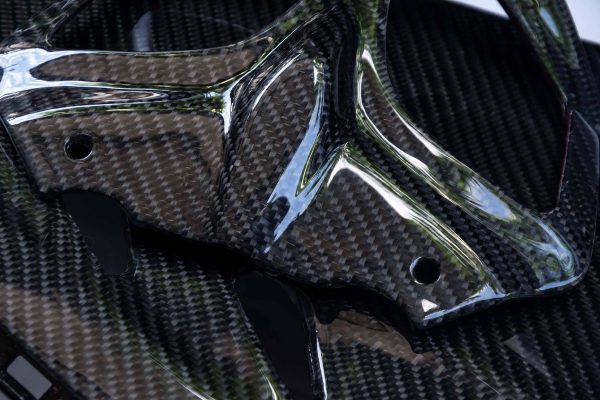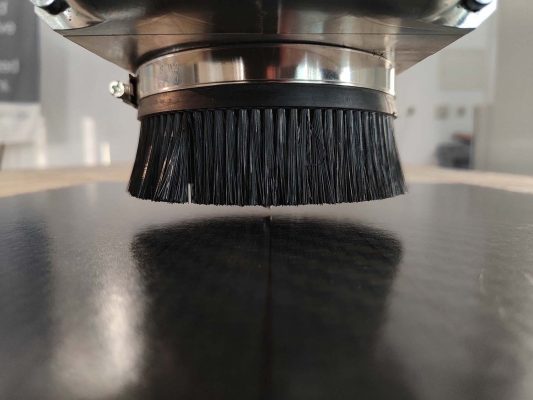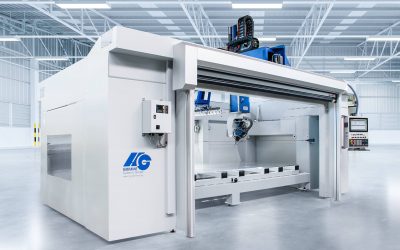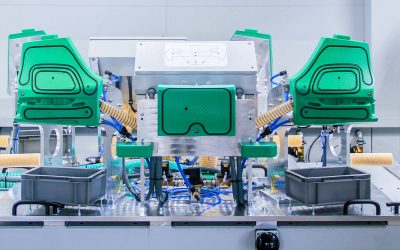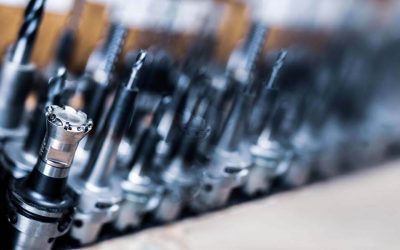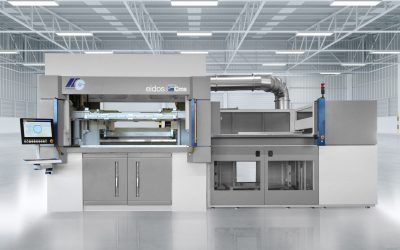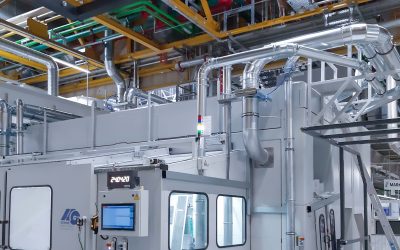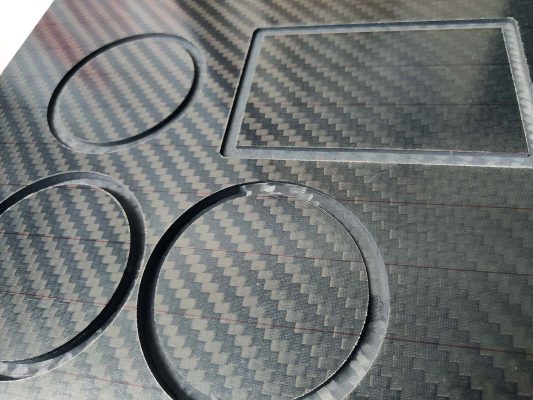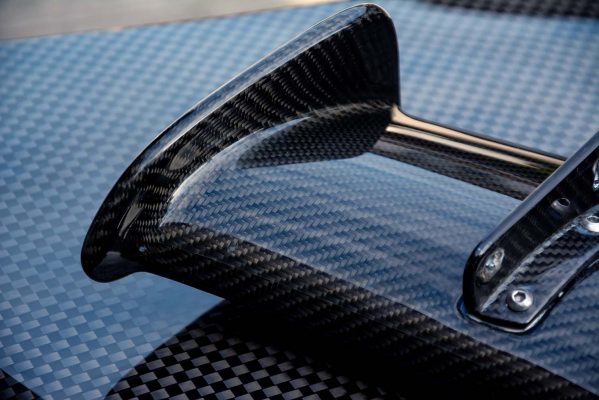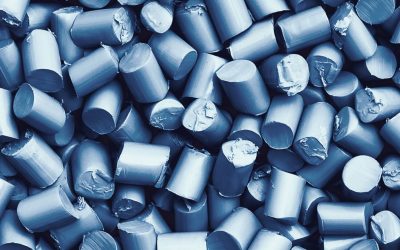Composites CFK/GFK/Carbon — safe CNC milling – low dust with enclosed extraction
Processing lightweight materials such as fibre composites with a milling machine is very different to processing plastic or metal. This is because milling fibre-reinforced plastics produces a huge amount of dust which presents a real challenge for companies when it comes to health and safety in the workplace. With a CNC machining centre from HG GRIMME SysTech, you are perfectly equipped to handle these milling processes – because we offer specially developed extraction options for every CNC machine.

“We want to achieve the highest possible milling speed, a high feed rate per tooth, combined with a long lifespan for the cutter, producing a low amount of dust and a perfect quality of surface finish for our customers.”
Andreas Waibel, Application engineer
CNC machining centres for composite materials – a selection
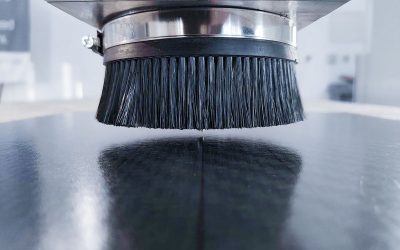
CFRP milling and machining – 5-axis CNC machine – Interview
A fine line between nightmare and lightweight vision
More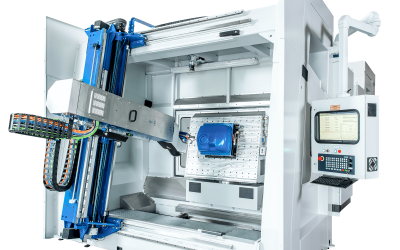
CNC milling machine with rotary table and inclined bed for composite materials
Milling composite materials such as GFRP – safe machining of all composites – no fine dust – almost 100% extraction at the CNC milling machine – modularly adaptable to your workpiece.
MoreFAQs about CNC Milling of Composite Materials
- 1. Safe, low-dust machining thanks to a closed extraction system, specially developed for composite materials.
2. High productivity: fast milling speeds, high feed per tooth, and excellent surface quality.
3. Longer tool life thanks to the perfectly coordinated interaction of machine, material, extraction, and milling tool.
Conductive fine and airborne dust is generated, which can be hazardous to both health and electronics. For this reason, closed extraction systems and clear operating procedures are essential.
- 1. Capture dust directly at the source, such as at the tool, cutting contour, and fixture.
- 2. Use a closed cabin and optimized airflow to prevent dust from spreading.
- 3. Ensure monitored filtration with suitable filters.
- 4. Plan the environment: control cabinet positioning, clear service procedures, and trained operating staff.
Yes, we have extensive experience with machines of all sizes. Our 5-axis machining centers are consistently designed for composite materials – from gantry solutions to inclined-bed rotary table machines. The key is the overall package: closed, multi-stage extraction at the cutting point, composite-specific machining strategies, and suitable clamping and tool concepts. Our application engineers have many years of experience with CFRP/GFRP/carbon – from process design to safe commissioning.
Composite materials – CNC milling with an extractor and the right milling tool
Composite materials are made from two or more unmixed base materials. When the individual base materials are joined together, you get a material that combines all the beneficial properties of the base materials for the component that will then be produced. Composite materials are frequently designed to produce a high level of rigidity and strength. This property makes them suitable materials for use in lightweight applications and therefore very appealing to many industries.
The only problem is that milling composite materials produces large amounts of dust. Whereas fine dust poses a health risk to the machine operators if they breathe in the dust and chips, suspended particulates may cause electric short circuits. This is why our development team has focused on the issue of dust formation in the design process and developed various extraction systems or air vents as options that can also be added to the design of our CNC machining centres.
As well as having an efficient extraction system, it is also vital to use the right milling tool to reduce dust formation as much as possible. In addition, using the appropriate milling tool can also curb the amount of noise produced. We will be happy to develop the perfect milling tool for you, adapted to suit your CNC machining centre and the material that is going to be processed.
Opening the control cabinet? Wait! – Beware of short circuits and fine dust
Despite all the safety measures in place, a factory hall in which CFRP is milled will never have the atmosphere of a cleanroom. It is simply not possible to prevent a certain proportion of the fine dust from getting out of the CNC machine. All it takes to cause a short circuit is a single chip.
“You do not need a pile of chips for a short circuit; all it takes is a single chip, thinner than a human hair, in the wrong place, for example on a semiconductor element. This does not just creep up either, it simply goes bang,” explains W. Grimme. This is why when processing CFRP material it is strictly prohibited to open the control cabinet while milling is taking place. To make sure the machine does not fail, we seal every single cable leading to or from it and equip it with its own clip. This makes the control cabinet as sealed as possible, and there is also positive pressure inside it. As the pressure is equalised when the cabinet is opened, it is inevitable that air will be drawn from the factory hall into the cabinet. This is why it is particularly important to exhaust the air around the cabinet before it is opened and ideally place it at least six metres away from the CNC milling machine.
The Sinamics S120 drive components as well as the machine tool control technology originate from Siemens. It is also working on these material-specific problems. Solutions might include preventing short circuits for example by providing appropriate protective coatings or creating the greatest possible gap between the elements that a chip will need to bridge.
